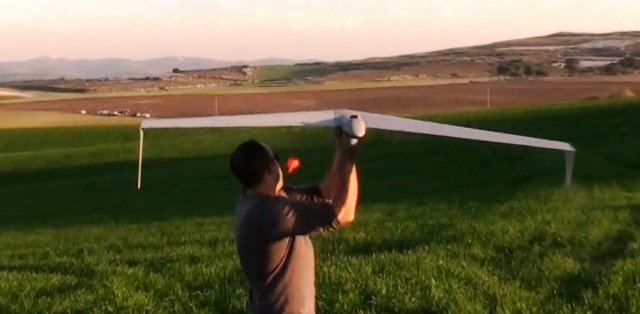 First responders and Homeland Security forces worldwide are today investigating the use of UAS in the HLS arena.
First responders and Homeland Security forces worldwide are today investigating the use of UAS in the HLS arena.
The 2013 EU Roadmap, for example, illustrates the plan to engage UAS in Civil Airspace. According to the roadmap, the goal is to achieve a capability for remotely piloted aircraft systems to fly in general airspace — with some restrictions — by 2016, and to achieve full operational capability by 2020.
HLS forces and first responders that would like to acquire UAS are in need of lightweight systems that can be deployed and launched within minutes, are capable of providing them with intelligence and reconnaissance capability both day and night, and include tracking of moving targets and laser pointers.
This is in addition to the fact that the HLS forces at field are already wearing various kinds of weapons, ballistic vests, etc., leading the UAS industry to develop high end lightweight UAS systems.
Thus, the requirement for the downscaling of UAS and payloads has become a millstone for UAS companies worldwide. A company that cannot keep up with this development can find itself out of business tomorrow.
UAS minimization which is reaching 90% or more from earlier versions of UAS systems, and the demand for lightweight systems that has the same technological capability of the earlier and heavier UAS systems, has created a real revolution in the Mini and Micro UAS systems segment.
R&D budgets of hundreds of million dollars are invested in the minimization and creation of new payloads with the ability for day and night observation and laser pointers – all in one payload.
Recently, Aerovironment introduced a new version of the WASP UAS system that includes the mantis payload. This payload has a day and night capability and a laser pointer – all of it weighing 275 grams. In Israel, different payloads companies such as NextVision are offering payloads in similar weights (the MicroCam D by Nextivision weights only 100 grams.)
The enhanced requirements from UAS led to a significant leap forward in the technology and approach for solving the problems of stabilization and tracking in these lightweight payloads. The old payloads which weighted several kilograms have gone through some major changes and developments and weigh a mere hundred grams today.
Modifications were made in both the mechanical and stabilization aspects. In the mechanical aspect the use of metal was converted to the use of composite materials. In the stabilization aspect, there is a transition from electro-mechanical stabilization of the mounting system, to electronic stabilization on the sensor.
The progress in the computing components according to Moore’s law gave us the possibility to calculate the algorithms achieving the tremendous speeds required for stabilization.
The requirement for a fully autonomous UAS that can face obstacles and operate independently in high risk missions demanded enhanced performance and different payloads. Therefore, we are seeing today not only electro-optical payloads, but also wide spectral payloads, EW payloads, payloads that enable detection and alarm of obstacles and threats.
In the near future we will see smaller payloads achieved within radar, laser and thermal systems. We are talking about payloads that would not exceed 100 grams. These developments are causing a change in the operational concept of UAS. We may soon see tiny UAS operating in the urban arena, giving increased situational awareness for both indoor activities and the outdoor area. In open fields we will see UAS flying in high endurance, enabling constant situational awareness pictures of the city; and swarms of fully autonomous UAS that are able to complete their mission independently and tackle any mission obstacles by themselves.
These developments will be made possible largely due to large R&D budgets with increased funds aimed at reducing the weight of the HLS forces systems.
Article by Michael Armon, originally published in IHLS. Mr. Michael Armon is the CEO of Innocon
Source: IHLS
